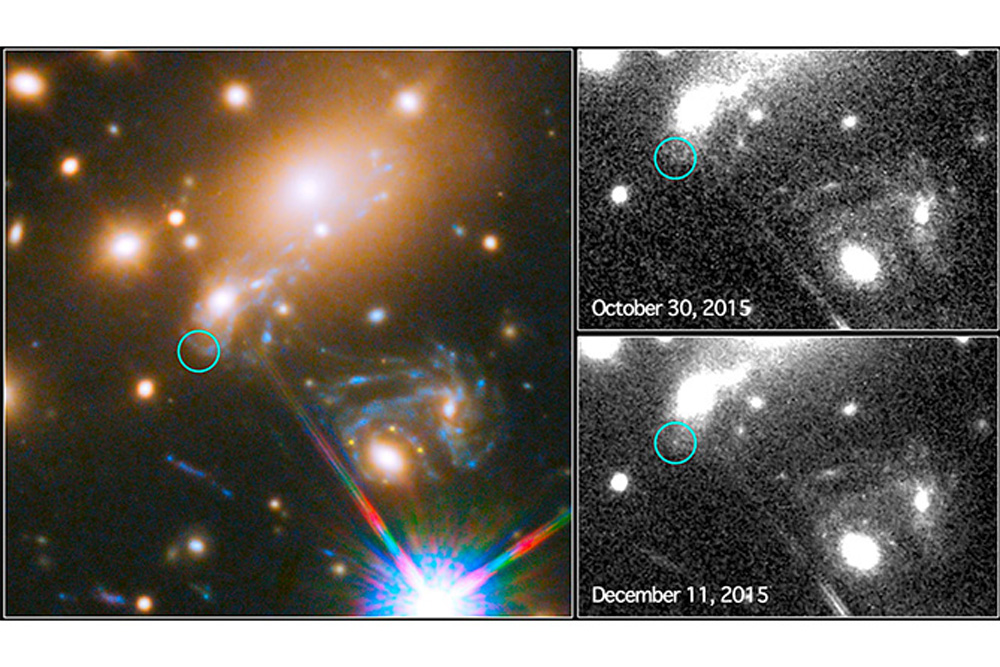Hubble's 'Einstein Cross' Supernova Strikes Back

An ancient supernova that was serendipitously captured in four Hubble space telescope images thanks to a naturally occurring cosmic magnifying lens has reappeared, as astronomers predicted.
RELATED: Hubble Shows Mirror, Mirror, Mirror, Mirror of an Ancient Supernova
The exploded star, known as Refsdal in honor of Norwegian astronomer Sjur Refsdal, first appeared in November 2014. Scientists were stunned to find four images of the supernova around a galaxy, a configuration known as an “Einstein Cross.”
The multiple images were caused by light from the supernova, which exploded about 10 billion years ago, taking different paths around a gravitationally warped region of space, relative to Hubble’s line of sight.
These warped regions are due to massive galaxy clusters bending space and time, a phenomenon predicted by Albert Einstein 100 years ago.
PHOTOS: The Warped Beauty of Gravitational Lenses
Astronomers have been taking advantage of so-called “gravitational lensing” to boost Hubble’s imaging powers.
Get the Space.com Newsletter
Breaking space news, the latest updates on rocket launches, skywatching events and more!
The four supernova images captured by Hubble appeared within a few weeks of each other in November 2014. Scientists predicted the lensed region of space would cause additional images of the supernova to appear sometime in the next five years. They found it on Dec. 11.
“We used seven different models of the cluster to calculate when and where the supernova was going to appear in the future. Remarkably, all seven models predicted approximately the same time frame.” physicist Tommaso Treu, with the University of California at Los Angeles, said in a statement.
Frontier Fields: Hubble Lens to Get Superboost
Having nailed Refsdal’s reappearance, scientists can now refine their estimates of the lensing cluster’s mass, particularly its non-light emitting dark matter.
Originally published on Discovery News.
Join our Space Forums to keep talking space on the latest missions, night sky and more! And if you have a news tip, correction or comment, let us know at: community@space.com.

Irene Klotz is a founding member and long-time contributor to Space.com. She concurrently spent 25 years as a wire service reporter and freelance writer, specializing in space exploration, planetary science, astronomy and the search for life beyond Earth. A graduate of Northwestern University, Irene currently serves as Space Editor for Aviation Week & Space Technology.









